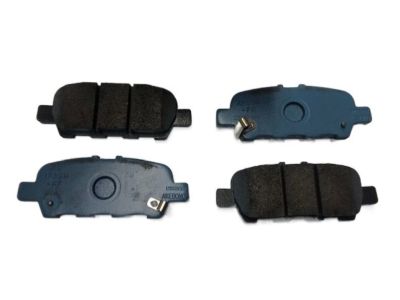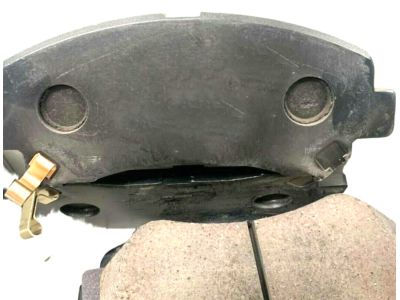×
- Live Chat
- 1-888-726-6993

My Garage
My Account
Cart
Genuine Nissan Juke Brake Pad Set
Disc Brake Pad Set- Select Vehicle by Model
- Select Vehicle by VIN
Select Vehicle by Model
orMake
Model
Year
Select Vehicle by VIN
For the most accurate results, select vehicle by your VIN (Vehicle Identification Number).
5 Brake Pad Sets found
Nissan Juke Rear Brake Pads Kit
Part Number: D4M60-9N00B$73.59 MSRP: $111.93You Save: $38.34 (35%)Ships in 1-3 Business DaysNissan Juke Rear Brake Pads Kit
Part Number: D4060-JA00J$71.58 MSRP: $108.88You Save: $37.30 (35%)Ships in 1-2 Business DaysNissan Juke Front Brake Pads Kit
Part Number: D1060-JN00A$69.03 MSRP: $105.00You Save: $35.97 (35%)Ships in 1-2 Business DaysNissan Juke Front Disc Brake Pads Kit
Part Number: D1M60-9N00A$69.11 MSRP: $105.13You Save: $36.02 (35%)Ships in 1-3 Business DaysNissan Juke Disc Brake Kit
Part Number: D1080-ET01C$78.42 MSRP: $119.30You Save: $40.88 (35%)Ships in 1-3 Business Days
Nissan Juke Brake Pad Set
If you need any OEM Nissan Juke Brake Pad Set, feel free to choose them out of our huge selection of genuine Nissan Juke Brake Pad Set. All our parts are offered at unbeatable prices and are supported by the manufacturer's warranty. In addition, we offer quick shipping to have your parts delivered to your door step in a matter of days.
Nissan Juke Brake Pad Set Parts Questions & Experts Answers
- Q: How do you properly replace the rear brake pads on a Nissan Juke?A: Chock the front wheels, jack up the rear of the car, and support it on axle stands before removing the rear road wheels and fully releasing the handbrake. On one side of the vehicle, push the caliper piston into its bore by pulling the caliper outwards, then unscrew and remove the caliper lower guide pin bolt. Pivot the caliper body upwards to expose the brake pads, securing it in place without depressing the brake pedal, and take care not to strain the brake fluid hose. Note the locations and orientation of the shims and anti-rattle clips, then lift out the brake pads, shims, and clips. Separate the shims from the pads, noting their fitted position, and measure the thickness of each brake pad's friction material; if any pad is worn to the specified minimum thickness or less, all four pads must be renewed, and any fouled pads should also be replaced. If the pads are serviceable, clean them carefully, paying attention to the sides and back of the metal backing, and clean the anti-rattle clips, shims, and brake pad locations in the caliper body. Check that the rubber guide pin gaiters are undamaged, brush away dust and dirt from the caliper and piston, and inspect the dust seal and piston for damage or leaks. If new brake pads are to be fitted, push the caliper piston back into the cylinder using a G-clamp or suitable levers, monitoring the master cylinder reservoir to prevent spillage. Refit the upper and lower anti-rattle clips, apply anti-squeal brake grease to the contact surfaces of the pad backing plates, and refit the shims, ensuring no grease contacts the pad friction linings. Refit the pads and shims in their original positions, pivot the caliper back into place, and tighten the caliper lower guide pin bolt to the specified torque. Check that the caliper body slides smoothly on the guide pins, repeat the procedure on the remaining rear caliper, and after refitting both sets of front brake pads, depress the brake pedal repeatedly until normal pedal pressure is restored. Finally, refit the roadwheels, lower the vehicle to the ground, and check the brake hydraulic fluid level, keeping in mind that new pads will not provide full braking efficiency until they have bedded in, so avoid hard braking for the first hundred miles after renewal.
















